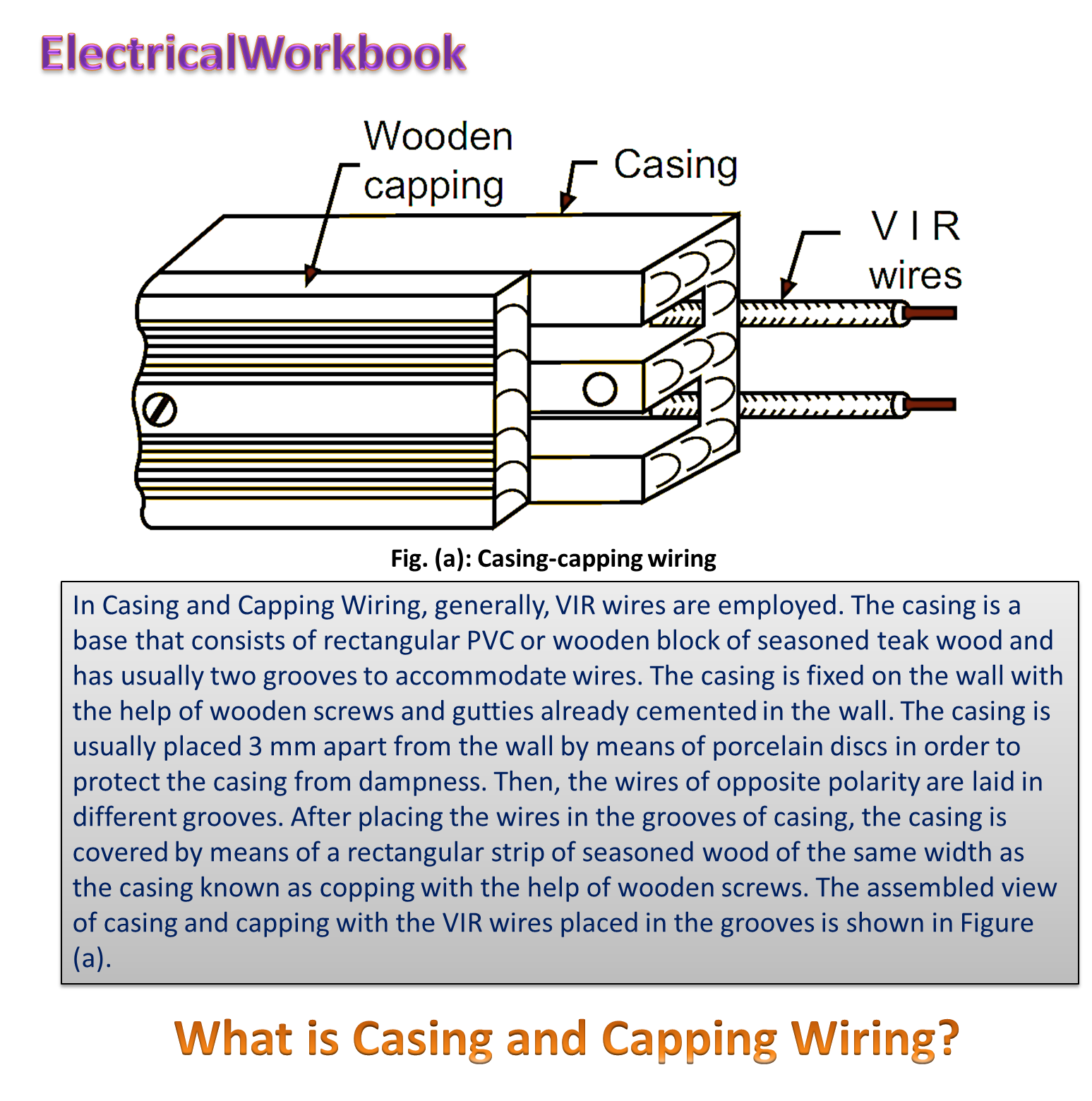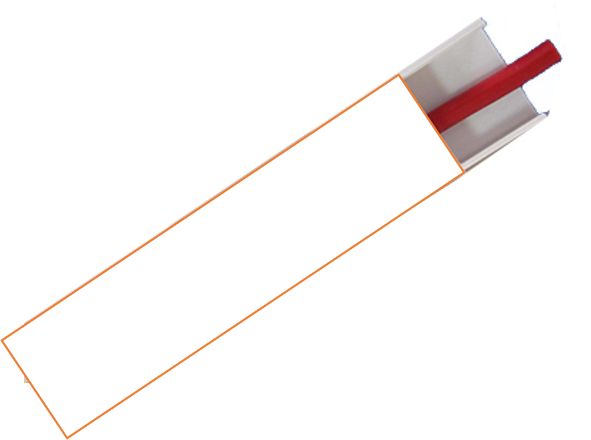
In this wiring system VIR wire or PVC wires run in the grooves of the teak wood casing and capping that is why this system is known as casing and capping system of wiring. The casing is first fixed on the surface of wall or ceiling by means of wooden gitties and wood screws. Generally there are two grooves in the casing in which wires are laid down. The casing the cappings are of different sizes as 38 mm × 16 mm, 51 mm × 19 mm, 64 mm × 19 mm, 76 mm × 25.4 mm, 89 mm × 31.8 mm and 102 mm × 31.8 mm etc. Nowadays wooden casing and cappings are seldom used, we are switching to PVC casing and capping, their appearance is also good (Figure 1).

Fig.1: Casing and Capping wiring
Advantages of Casing and Capping wiring
- This wiring has got a good appearance.
- It has long life than the cleat wiring.
- The wires are safe from mechanical damages, dampness and rats
- If painted and round cleats are used then it is free from moisture and vermins etc.
Disadvantages of Casing and Capping wiring
- It requires better workmanship so labour is costly.
- There is no safety from fire.
- The two wires of opposite polarity cannot run in the Same groove but should run in different grooves.
- No protection from dampness.
- If not painted and varnished, the vermins may eat the wood and life is considerably reduced.
- Extension is not so easy.
- Fault location is not easy as the wires are covered.
General rules for wiring
- Round porcelain cleats should be used under the surface of casing and capping to keep the wiring safe from moisture.
- The wiring should be painted and varnished to save it from vermins and dampness.
- Where there is a crossing in the wires of opposite polarity bridge must be provided.
- There should not be any gap between the casing and capping.
- The width of both casing and capping should be same.
- In no case the casing be capping be burried under the plaster etc.
- When the wiring is to be passed through the wall, conduit pipe with bushings should be used.
- At bends the grooves of casing and capping should be well rounded to avoid the damages to the insulation of the wiring.
- The wiring should not be done near the water pipes and gas pipes.
- The wooden gitties must be used near the bend, accessories and joints etc.
- 15 mm screws should be used with capping and 35 mm screws for casing. The distance between the two gitties, in no case be more than 70-90 cm.
Uses: lt is a common type of house wiring. It should never be used where there is a risk of fire (blacksmith and moulding shops) and in damp places.